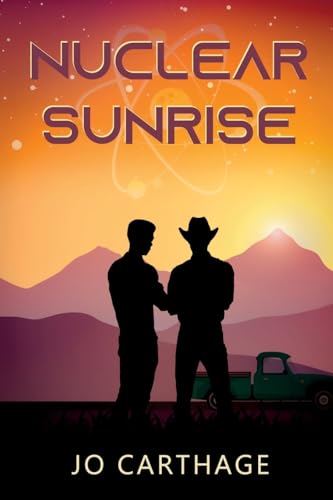Nuclear Sunrise
In 1951, US Air Force Captain Brian Flynn comes to the Idaho desert to head the security detail at the first Experimental Breeder Reactor attempting to produce plutonium for electrical power. He is fleeing a near-miss with the infamous WWII-era military “blue discharge,” for “undesirable habits and traits of character,” which are never described but clearly imply homosexuality. In Idaho, Flynn meets physicist Dr. Aaron Antares, who seems impervious both to uranium poisoning and to any regulations regarding his personal habits.
What follows is an engaging love story (including a good deal of well-written sexual activity) and a chilling indictment of the blue discharge process and the damage it did, set against a fascinating, well-researched background: Cold War-era nuclear physics and the scientists who worked with this new and terrifying power.
In Brian’s hometown, Roswell, New Mexico, the 1947 announcement, hastily retracted, of an alien spaceship crash was followed by an endless stream of alien jokes. However, the crash, at the time attributed to a weather balloon, proves to be more significant than he had thought. At this point, the sudden reveal of a mid-book plot twist does give rise to questions of plausibility for this reader, not so much for the plot development itself as for some questionable details. Otherwise, Nuclear Sunrise offers well-written characters we can root for, and something important to say beyond the framework of their romance about how the military, and the country, treated and in some cases still treats its members.










